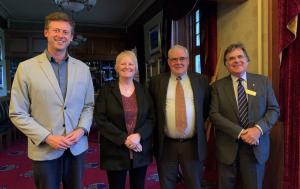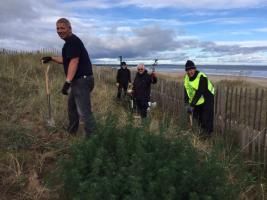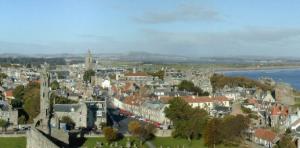HMS Unicorn - the most original old ship in the world
Tue, Mar 2nd 2021 at 7:00 pm - 8:30 pm
Reception - John Spittal,
.jpg)
Eric Fraser brought Kilrymont St Andrews Rotary Club aboard HMS Unicorn as he charted the history and future of the Dundee-based vessel in a talk to fellow members.
Eric, an ex-naval officer, said the frigate was known to many locals as the party boat but there was much more to the ship than partying.
Built at Chatham and launched in 1824, the 46-gun frigate was ahead of its time. Designed by Sir Robert Seppings at the time of the industrial revolution, he used iron and wood together creating greater strength and rigidity.
The frigate was never called into battle around the world. In 1857 it was lent to the war department and used as a powder hulk at Woolwich arsenal after having a roof fitted and it returned to Chatham in 1862.
In 1873 she was brought to Dundee as a training ship for the Royal Navy reserves and was in use until 1960.
During the Second World War, Unicorn was used by the first Women's Royal Navy Service units and the ship was also the scene of a surrender by the crew of a German U-boat.
In 1962 the vessel moved from Dundee’s Camperdown dock to Victoria dock. The frigate’s future was uncertain and the navy had considered using her as a target ship at sea. Fortunately, in 1968 the Unicorn Preservation Society was formed and in 1969 the MoD handed the ship over to them.
A few years later after some restoration work, the ship was opened to the public and then used for many functions such as country dancing classes, weddings and social nights.
Since 2017 there have been many changes made making her brighter and cleaner inside and becoming a working maritime museum.
Being one of only seven wooden ships left in the world and still in the water, the Unicorn is 90% original and unique.
In 2019, 15,000 people visited the ship and there are ambitious proposals to move the ship into a purpose-built dry dock by 2024, as part of the Dundee riverfront development plan, where the ship would be preserved and protected from the elements under a canopy.
After an enthusiastic question and answer session, John Spittal gave vote of thanks.
'What We Do' Main Pages:

.jpg)


